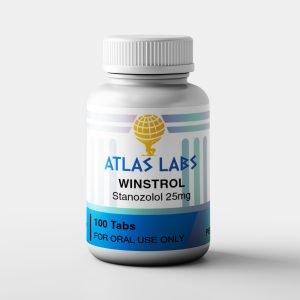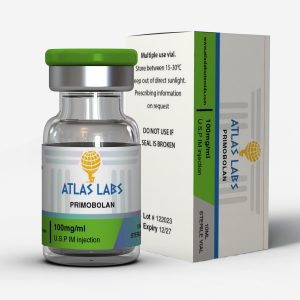Testosterone is often associated with men, muscle growth, and athletic performance. However, what many people don’t realize is that women also produce testosterone—just in smaller amounts. It plays a vital role in energy, libido, bone density, and mood regulation.
In recent years, an increasing number of women have started to explore testosterone replacement therapy (TRT) or low-dose testosterone optimization as a way to address symptoms of hormonal imbalance, fatigue, or poor recovery. But can women really take testosterone safely? Let’s break down the science, benefits, risks, and what women need to know before considering TRT.
Why Women Need Testosterone
While estrogen and progesterone tend to dominate discussions around female hormones, testosterone is equally crucial. Produced mainly in the ovaries and adrenal glands, it supports several key functions:
- Muscle maintenance and strength
- Healthy libido and sexual satisfaction
- Stable mood and emotional balance
- Bone density and joint health
- Energy and motivation
As women age—especially after 30—testosterone levels begin to decline gradually. Stress, poor diet, lack of sleep, and certain medications can accelerate this drop. As a result, women might experience low libido, fatigue, brain fog, or decreased muscle tone.
However, since many symptoms overlap with those of menopause or general aging, low testosterone in women often goes undiagnosed.
What Is Female Testosterone Therapy (TRT)?
Testosterone Replacement Therapy (TRT) for women involves supplementing the body with low doses of testosterone to restore optimal hormonal balance. Unlike male TRT, which aims to raise testosterone to much higher levels, female TRT focuses on subtle optimization within a physiological range.
There are several delivery methods, including:
- Creams or gels: Applied daily to the skin for gradual absorption.
- Injections: Given weekly or bi-weekly, though less common for women.
- Pellets: Implanted under the skin for slow release over months.
- Oral capsules: Less preferred due to inconsistent absorption and potential liver stress.
Each option has pros and cons, and dosage should always be customized under medical supervision.
Benefits of Testosterone Therapy for Women
When prescribed properly and monitored by a qualified physician, TRT can help improve both physical and emotional well-being. Commonly reported benefits include:
- Increased energy and stamina: Many women notice higher vitality and motivation throughout the day.
- Improved libido and sexual satisfaction: Testosterone directly influences sexual desire and arousal.
- Better mood and mental clarity: Balanced hormones often translate to improved emotional stability and reduced irritability.
- Enhanced body composition: Combined with exercise, testosterone may help reduce fat mass and support lean muscle development.
- Stronger bones: Testosterone promotes bone mineral density, which is crucial for postmenopausal women.
In addition, testosterone may indirectly improve sleep quality, recovery from exercise, and even skin elasticity due to its influence on collagen production.
Risks and Side Effects
Despite the potential benefits, testosterone therapy is not without risks. Dosage precision is everything. When levels rise too high, androgenic side effects can occur, including:
- Acne or oily skin
- Thinning hair on the scalp (and hair growth on the face or body)
- Voice deepening (which may be permanent)
- Enlarged clitoris
- Mood changes or increased irritability
Additionally, too much testosterone can disrupt other hormones, particularly estrogen and progesterone, leading to irregular menstrual cycles or fertility issues.
That’s why professional monitoring—including blood work every 3–6 months—is essential. Women should never self-prescribe testosterone or use male-dosed formulations, as even small differences in concentration can lead to significant side effects.
How Testosterone Interacts with Other Hormones
The female endocrine system is complex, and testosterone is just one piece of the puzzle. It interacts closely with estrogen, progesterone, thyroid hormones, and DHEA.
For instance, when testosterone levels increase, some of it converts into estradiol through aromatization. This can be beneficial in maintaining bone and heart health, but excessive conversion may lead to symptoms of estrogen dominance—like bloating, mood swings, and breast tenderness.
Therefore, hormone balance requires more than just boosting testosterone. Comprehensive panels that measure free and total testosterone, estradiol, SHBG (sex hormone-binding globulin), and DHEA-S provide a full picture of hormonal health.
Can Women Use Testosterone for Fitness or Muscle Gain?
In fitness circles, some women explore low-dose testosterone or anabolic compounds like Anavar or Primobolan for lean muscle growth and fat loss. These compounds mimic testosterone’s anabolic effects but vary in potency and side-effect profile.
When used responsibly, women can experience increased strength, faster recovery, and better muscle tone without developing masculine traits. However, the margin for error is narrow. Even slight overdosing can trigger androgenic symptoms.
For this reason, natural testosterone optimization—through sleep, nutrition, resistance training, and stress reduction—should always come first. If symptoms persist, a doctor specializing in female hormone therapy can determine whether medical testosterone is appropriate.
What Blood Work Should Women Get Before TRT?
Before starting testosterone therapy, a doctor will typically order:
- Total and Free Testosterone
- Estradiol (E2)
- Progesterone
- DHEA-S
- SHBG (Sex Hormone Binding Globulin)
- Liver enzymes and lipid profile
These markers establish a baseline and help determine if symptoms are truly linked to low testosterone or if another hormone imbalance is to blame. Follow-up testing ensures the dose remains effective without crossing into the high-androgen zone.
Final Thoughts
Yes, women can take testosterone—but only under the right conditions and medical supervision. When managed properly, it can restore energy, confidence, libido, and vitality. However, misuse or unmonitored dosing can cause irreversible changes.
The information provided in this article is intended for educational and research purposes only. It does not constitute medical advice or a recommendation to use any substances discussed. Always consult with a licensed medical professional before beginning any supplement, peptide, or anabolic steroid protocol.If you’re interested in exploring high-quality research compounds, you can browse our shop here.

